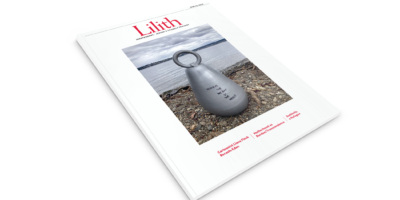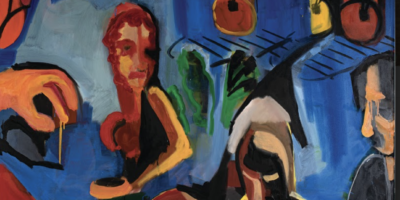
New and Middle Grade and Y.A Fiction Tackles the Toughest Subjects
I’ll Keep You Close by Jeska Verstegen, translated from the Dutch by Bill Nagelkerke (Levine Querido, $17.99)
“Make sure no one can hurt you, Mama says. Don’t be conspicuous, don’t talk too loudly, don’t make mistakes, be tidy, stay inside the lines, and always be careful everywhere you go, even if the danger is past. Be invisible, in other words.” In the home of 11-year-old Jeska the curtains are kept closed at all hours of the day, and she has learned not to ask questions. It is 1980s Amsterdam, and she comes to discover and piece together—almost by accident because they thought it better to keep it from her—the devastation that her mother experienced as a young child during the Holocaust. And that she is Jewish. This poignant middle-grade novel of intergenerational trauma is based on the author’s family history. “Even when you don’t speak, you’re still saying something.”
How to Find What You’re Not Looking For by Veera Hiranandani (Kokila, $17.99)
A family’s heartbreaking rift and efforts to heal is bookended by the 1967 Loving vs. Virginia Supreme Court case overruling state laws banning interracial marriage and the 1968 assassination of Reverend Martin Luther King, Jr. Told in an unusual second-person narrative, this engaging novel addresses the main character, 11-year-old Ariel, who has always shared a bedroom with her 18-year-old sister, Leah. And Leah has fallen in love with Raj, an Indian Hindu, much to the distress of the girls’ Jewish parents, working hard at their bakery in a Connecticut town where not many other Jews live. Filled with loneliness, friendship, dysgraphia and poetry, a devoted teacher, and rugelach.
Linked by Gordon Korman (Scholastic, $17.99)
“Tolerance is a more about the journey than the destination,” concludes one of the characters in this tightly plotted mystery set in a contemporary small Colorado town with almost no Jews and a sometimes-disputed history of a Ku Klux Klan night of terror. Dozens of swastikas begin appearing in a middle school. There’s an overwhelmingly enthusiastic project to repudiate racism and antisemitism. Also: a widely followed and locally unpopular Tik Tok celebrity reporting on the events; dinosaur fossils; and, unexpectedly a bar mitzvah. The author said he was inspired in writing this novel by the 1998 eighth-grade Paper Clip Project in Whitford, Tennessee.
Bluebird by Sharon Cameron (Scholastic Press, $18.99)
This gripping young adult historical fiction thriller shows a different angle on the Holocaust than many Jewish readers may be accustomed to. Drawing on real events, Bluebird centers on a teenage German girl who, as the war ends, discovers to her horror the reality, the lies and evils of the Nazi regime. She learns, too, the role of her father. His experiments manipulating the human mind cause both the American intelligence operatives and the Soviets to see him as a valuable potential asset in the looming Cold War. The story takes the reader from 1945 to 1947, first in Germany, then New York, where the heroine follows clues to find her father but decides to follow her own heart and conscience and avenge his wrongdoings. The kindness of the workers and volunteers at a Quaker-based refugee center and a hopeful youthful romance help alleviate this book’s impression of a terribly broken and depraved world.
The Maps of Memory: Return to Butterfly Hill by Marjorie Agosín, illustrations by Lee White, translated from the Spanish by Alison Ridley (Caitly Dlouhy/Atheneum, $18.99)
Inspiring in its depiction of resilience, this historical novel describes the aftermath of Chile’s terrifying regime in which thousands of people were murdered and many others were “disappeared.” Narrator is 14-year-old Celeste Marconi, who has returned from Portland, Maine, where she’d been sent out of harm’s way to stay with an aunt. (Her narrative evokes, for me, some of the upheaval we have been experiencing during the coronavirus pandemic and a longed-for recovery.) The novel, sequel to I Lived on Butterfly Hill, sent this reader to look up the history of Chile, of Pinochet and the beautiful settings of Valparaiso and Chiloe. I became aware of the difficult decisions Agosin had to make in compressing 17 years of terror (1973–1990) into the novel’s three years. I missed in this sequel the depiction of Celeste’s family as Jewish. We know from the first book that her grandmother arrived in Chile as a refugee from the Holocaust, and it is clear in this follow-up story, too, that Abuela Frida is a wise expert in surviving trauma and thriving afterward.
Sylvie by Sylvie Kantorovitz (Walker Books, $24.99)
Born in Casablanca, Morocco, and growing up in France, artist/illustrator Kantorovitz was advised by her mother that “We don’t need to hide that we are Jewish, but we don’t need to proclaim it either.” Sylvie found her parents’ relationship so troublesome that she sometimes hoped they would divorce, and “wondered if every family had an ongoing drama, hidden from the outside world.” This charming middle-grade graphic memoir of childhood-through-
young adulthood evokes a strong sense of time and place, in the day-to-day life and interactions of a girl learning to think for herself.
Naomi Danis is an editor emerita of Lilith and the author of popular children’s books, most recently “Bye, Car.” naomidanis.com.




